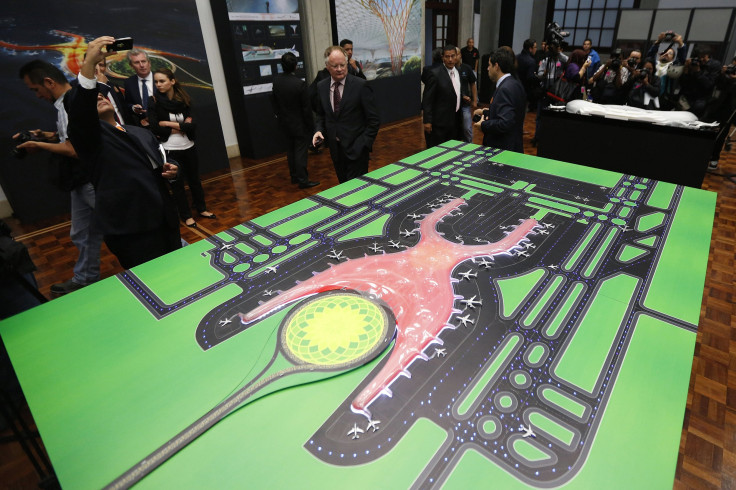Mexico's Plans For A $9.2 Billion Airport Revive Resistance From Neighboring Farmers

Mexico’s President Enrique Peña Nieto unveiled this week details for a new Mexico City airport that will quadruple existing capacity and potentially become Latin America’s biggest transit hub. But a group of farmers living near the planned site is fiercely opposed to the project – and they have already taken down one airport project before.
The government has dreamed of overhauling the existing Benito Juarez International Airport for at least 15 years to ease oversaturation of the country’s second-busiest airport. Analysts say the existing infrastructure can handle up to 32 million passengers per year; last year, it saw 31.5 million passengers, and traffic is expected to keep growing.
The economic stakes are high: The Mexican Institute for Competitiveness, a Mexico City-based think tank, projects a new airport could contribute 1.4 percent to 2.5 percent of GDP, excluding the impact of tourism. That kind of a boost would surely be a boon to Peña Nieto’s legacy as he faces waning approval for his economic policies. Meanwhile, the think tank argues that not building the airport could reduce GDP by as much as 3 percent.
The new airport, according to the government’s plans laid out Wednesday, would cost $9.2 billion, cover 11,400 acres, include six runways and have the capacity to handle 120 million passengers. The first phase of the project, which includes the completion of three runways, would be finished by 2018. British architect Norman Foster and Fernando Romero, the son-in-law of Mexican billionaire Carlos Slim, were tapped as the project’s designers.
Peña Nieto has been careful to avoid the mistakes of former President Vicente Fox, who proposed a new Mexico City airport in 2001. Fox was forced to scrap those plans after farmers from the nearby town of San Salvador Atenco – 20 miles outside Mexico City – launched a fierce campaign against the government’s plan to expropriate their land for a scant 70 cents per square meter. Armed with machetes and Molotov cocktails, the protesters blocked roads and clashed with police, and eventually Fox canceled the project.
This time, Peña Nieto says the airport will be built entirely on federally owned land adjacent to the site of the 2001 proposed airport, emphasizing that no expropriations would be necessary. But members of the People’s Front in Defense of Land – the same group that led the 2001 demonstrations – jumped back into protest mode just hours after the president’s announcement.
“We continue to battle and are ready to fight,” said Ignacio del Valle Medina, leader of the front, at a press conference Wednesday. “We will not give up, and we send a message to Vicente Fox and Enrique Peña Nieto that is the same, that we will defend our land with our lives.”
Del Valle Medina said that the July 1 assembly of core communal landowners, which approved the government’s use of the land, was not held transparently or fairly, making the sale illegal. He also said that the airport’s proximity to Atenco would disrupt the residents' way of life.
For now, it’s not yet clear if the front will be able to mobilize residents to the same degree as the 2001 protests, but it has called for its first widespread demonstration on Monday.
© Copyright IBTimes 2024. All rights reserved.












